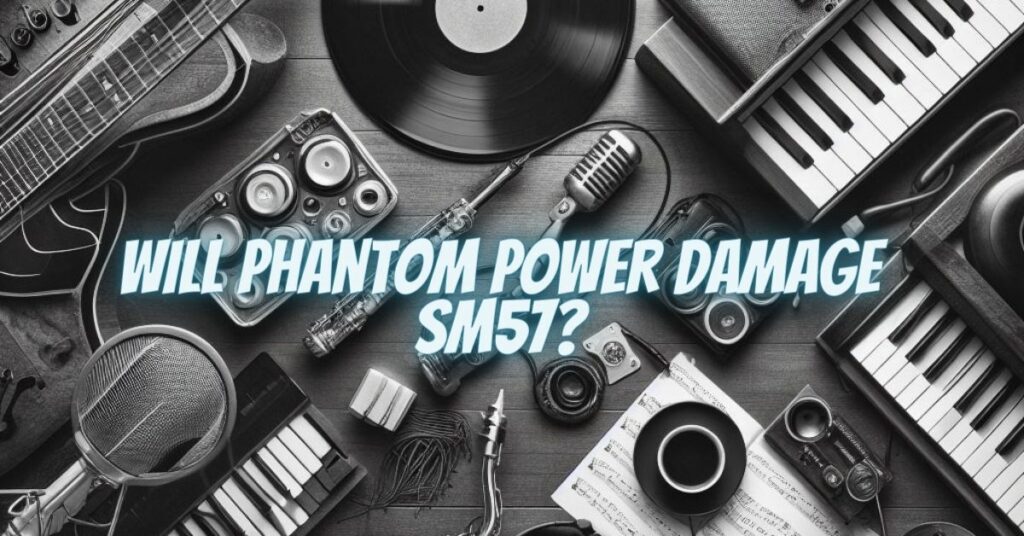The Shure SM57, a stalwart in the world of audio recording, is renowned for its versatility and durability. However, a persistent question looms among audio enthusiasts: Will phantom power damage the venerable SM57? This article aims to dispel misconceptions, shed light on the compatibility of the SM57 with phantom power, and provide insights into the considerations that ensure the longevity and optimal performance of this iconic microphone.
- Understanding Phantom Power: Phantom power is a method of delivering DC voltage (usually 48 volts) to a microphone through its balanced audio cable. This power is commonly used to energize condenser microphones, providing the necessary voltage for their internal preamplifiers and electronic components. Dynamic microphones like the SM57, on the other hand, do not require phantom power for their basic operation.
- SM57 and Phantom Power: The Shure SM57 is a dynamic microphone, meaning it operates without the need for external power. Unlike condenser microphones, which rely on phantom power to function, the SM57 is not designed to receive or utilize phantom power. However, the crucial point to note is that phantom power itself will not inherently damage the SM57.
- Safety Mechanisms in Dynamic Microphones: Dynamic microphones, including the SM57, have built-in transformers that act as isolating components. These transformers help protect the microphone from potential damage caused by phantom power. When phantom power is applied to a dynamic microphone, the transformer acts as a barrier, preventing the DC voltage from reaching sensitive components within the microphone, and thus safeguarding its integrity.
- Proper Cable Usage: While the SM57 is robust and well-protected against phantom power, it is essential to use balanced cables when connecting microphones to audio interfaces or mixers. Balanced cables help mitigate interference and noise, ensuring optimal signal transfer. Additionally, employing quality cables reduces the risk of potential issues associated with phantom power.
- Phantom Power Switches: Some audio interfaces and mixers feature global phantom power switches that apply the voltage to all channels simultaneously. It is prudent to turn off phantom power when connecting or disconnecting microphones, even dynamic ones like the SM57. This precautionary measure avoids the transient spikes associated with plugging or unplugging, which, although rare, could potentially lead to issues.
- Common Phantom Power Myths: Various myths and misconceptions surround the topic of phantom power and dynamic microphones. One common fallacy is that phantom power can damage dynamic microphones like the SM57. As clarified, dynamic microphones are designed to withstand phantom power without harm, thanks to their internal transformers acting as a protective barrier.
- Practical Considerations: In everyday use, countless audio professionals regularly employ the SM57 in environments where phantom power is prevalent. The key is to adhere to best practices: use balanced cables, turn off phantom power when connecting or disconnecting, and trust in the robust design of the SM57 to withstand the rigors of the audio production environment.
In the perennial debate surrounding phantom power and the venerable SM57, it is crucial to debunk myths and embrace the technical realities. While dynamic microphones like the SM57 do not require phantom power for their basic operation, applying phantom power, whether intentionally or accidentally, will not damage the microphone. Understanding the protective mechanisms within dynamic microphones and practicing proper cable management ensures a long and reliable life for the SM57, reaffirming its status as a go-to microphone for countless recording and live sound applications.

